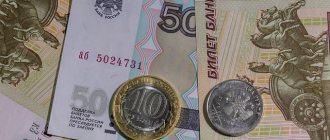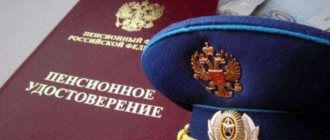2020 marks the start of global pension reform in Russia. The conditions under which people will begin to retire will change significantly. First of all, this concerns retirement age.
According to the Government, the reform is planned for the long term and is designed to increase the income of pensioners . It was said that these measures are aimed at implementing the “May Decree” dated 05/07/2018 No. 204, signed by V.V. Putin. It provides for Russia’s development strategy in terms of pension provision until 2024.
Last news
In 2020 it is planned:
- stable growth of pension payments exceeding the inflation rate;
- cash payments should increase to an amount of no less than 40% of a citizen’s salary before retirement.
The draft law, submitted for approval to the State Duma on June 16, 2018, initially provided for raising the retirement age to 65 years for men and 63 years for women.
August 29 V.V. Putin proposed a softer option - changing the retirement age for women up to 60 years old, and for those with many children - even lower. The document was adopted in the first reading, and until September 24, 2018, the legislator will accept clarifications and amendments to it for consideration. A more detailed development of the nuances of retirement for certain categories of citizens is also ongoing.
It was announced that as of January 1, 2020, the average insurance pension will increase by 1,000 rubles, which will amount to 12,000 rubles. in year. Insurance pensions will be indexed by 6.6%, which is higher than the expected inflation rate. Such statements were not understood correctly by all people and need clarification.
From 2020, in connection with the increase in the retirement age in Russia, the traditional procedure for indexing pensions will be changed - now they will increase annually from January 1 at a rate higher than inflation (that is, faster than the rise in prices for consumer goods and services)
Now the Government’s guideline when carrying out indexations will be to increase the average size of pensions by 1,000 rubles annually. Since in 2020 the average pension in Russia is 14,414 rubles, this increase from January 1 will result from indexation by 7.05% (for comparison: inflation in 2020 is projected at 3-4%).
As explained in the Pension Fund, the Russian tripartite commission, which, along with the Government of the Russian Federation, includes representatives of employers and trade unions, at a meeting on September 19, took into account the indexation of old-age insurance pensions from January 1 by 7.05% in 2019, by 6.6% and 6.3% in 2020 and 2021, respectively.
“The increase in pension is individual for each pensioner and its size will depend on the size of the pension. Based on the average size of the insurance pension for non-working pensioners in 2020, amounting to 14.4 thousand rubles, the increase in pensions as a result of indexation in 2020 will be one thousand rubles per month, or 12 thousand rubles per year,” the Pension Fund emphasized.
The indexation scheme proposed by the Government from 2020 should ensure an increase in the income of pensioners not only by the amount of inflation, but also in real terms. Thanks to this, the average size of payments to Russians by 2024 will exceed 20 thousand.
Taking into account the already published draft budget of the Pension Fund for 2019-2021, the increase in pensions will be carried out according to the following scheme (see table below):
| Year | 2018 | 2019 | 2020 | 2021 |
| Indexing | By inflation | On average 1000 rubles | ||
| 3,7% | 7,05% | 6,6% | 6,3% | |
| Average pension size, rub. | 14 414 | 15 430 | 16 448 | 17 484 |
An increase in pension by 1,000 rubles from January 1, 2020 will be given only to non-working pensioners.
Pensioners who continue to work can receive a cash increase only as a result of an annual recalculation of their pension in August, taking into account the insurance contributions that the employer pays for the pensioner to the pension insurance system; All missed indexations (including annual increases of an average of 1,000 rubles) will be taken into account for working citizens when determining the final amount of pension benefits after their dismissal (cessation of employment).
Will everyone be paid an additional 1000 rubles?
Compensation is due to people who receive an insurance (labor) pension and are not working. Those pensioners who are still going to work will not receive the payment, but after they stop working, they will be recalculated.
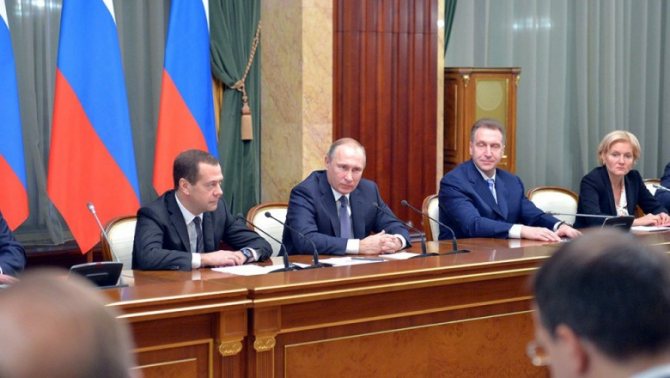
It is important to know that the amount is 1000 rubles. calculated for those receiving the official national average pension of 14,414 rubles. Indexation is 6.6% and gives about a thousand increase.
But here we must take into account that the majority of pensioners do not reach the level of 14 thousand and are trying to survive on the amount of 8-10 thousand rubles. And for them, 6.6% will be calculated based on their real pension. A person receiving, for example, 10,000 rubles, is no longer entitled to a thousand, but only 606 rubles. With income above 14,414 rubles. the pensioner will receive more.
If his pension provision, for example, is 20,000 rubles, then the payment will be equal to 1,212 rubles. It turns out that those who already received well will begin to receive even more, and those who receive little will not see a significant difference.
Who won't get 1000 rubles?
Now we remember the promise of our officials to increase pensions by 1000 rubles annually. Will they keep that promise this time?
That is, if your pension is less than 15.4 thousand, they will increase you less.
It turns out as always: “the rich get richer, the poor get poorer.”
If your pension is 10,000 rubles (which is quite typical for most of Russia), then the increase will be only 660 rubles.
And now another trick for those whose pension is less than the subsistence level in your region. You can see the cost of living in your region on the page: Data on the cost of living by region (see the table “for pensioners”).
The state cannot pay a pension below the subsistence level, and pays extra to those who have exactly this situation.
Such pensioners will also have their pension indexed, but 6.6% will only be added to the amount of your pension and will not increase the additional payment.
This is the arithmetic.
An old-age pension may be less than the regional subsistence minimum for a pensioner. For example, a man worked unofficially all his life and accumulated only minimal experience and points. By the age of 60, he was awarded a pension of 8,500 R. And the cost of living in the region is 10 thousand rubles.
Such pensioners are paid an additional amount that is not enough to reach the subsistence level in the region. Despite the fact that the earned pension is 8,500 R, the man will receive 10 thousand: the budget will add 1,500 R to him.
8500 RUR 1500 RUR 8500 RUR × 6.6% = 10,561 RUR
When the pension is less than the subsistence minimum, indexation does not concern the full amount of the payment, but only the actually accrued old-age pension, taking into account length of service and points. Therefore, for some pensioners, their full pension, taking into account additional payments, will increase not by 6.6%, but, for example, by 5%.
Everything you wanted to know about pensions
Who will get a raise and how to get it - in our free newsletter along with other materials about money
Deputy Prime Minister Tatyana Golikova announced an increase in pensions in the amount of 12,000 rubles per year. In fact, the increase of 12,000 rubles per year voiced by Tatyana Golikova means that the total annual income of the average non-working pensioner will increase by this amount, and not the monthly pension by the end of the year. Below is the pension calculation.
Of course, citizens should treat the words of an official of such a high rank with understanding. After all, she headed the Accounts Chamber and was the Minister of Health. True, some citizens, including pensioners, have not experienced improvements in this area. However, most have now forgotten about this. And it’s not about healthcare.
An increase of a thousand to the pensions of all pensioners was announced at a time when the overwhelming majority of citizens were indignant at the pension reform being pushed by the government and United Russia, supported by the president. The protests were attended not only by those who are “like walking to Moscow” before retirement, but also by pensioners and people of pre-retirement age. It was precisely for them that twelve thousand rubles per year were announced.

Time passed, and a law providing for raising the retirement age for men to 65 and for women to 60 was adopted. They did not allow a referendum to be held on this topic. Although the public did not calm down, the protests seemed to have died down. And then the authorities decided to reach an agreement on the thousandth increase in pension.
Does this supplement make a significant difference?
To answer this question, you need to look at the planned indexation of the average pension over several years, taking into account the inflation rate:
| Year | Projected inflation rate, % | Indexation by inflation, % | Estimated average pension, rub |
| 2018 | Z,1 | 3.7 | 14414 |
| 2019 | 4, W | 7.05 | 154З0 |
| 2020 | Z.8 | 6.6 | 16448 |
| 2021 | 4 | 6.3 | 17484 |
We must take into account that the real purchasing power of this thousand rubles will vary due to inflation, even if we believe that no serious financial turmoil will occur in our country over these few years.
The real increase in payments is equal to the difference between the % of indexation and the % of inflation for the past year. Consequently, the average pension in 2020 will increase not by the proclaimed 6.6%, but by only 2.3% (6.6 minus 4.3), etc. At the same time, it is still modestly silent that from 01/01/2019 The VAT rate will increase from 18% to 20%, which will inevitably lead to an increase in prices.
Why the increase in pensions from January 1 may be less than 1000 rubles
The thousand-ruble increase was calculated based on the average amount of insurance pension payments in 2020 - 14,414 rubles. If they are indexed by 7.05%, the increase will be about a thousand rubles. The increase in the pension amount for each specific case may be higher or lower than the specified value, and is determined by the current amount of security:
- For 12,000 rubles, the increase in pension will be 846 rubles.
- For 13,000 rub. – 916.5 rub.
- For 14,000 rub. – 987 rub.
- For 15,000 rub. – 1057.5 rub.
- For 20,000 rub. – 1410 rub.
- For 25,000 rub. – 1762 rub.
A thousand-ruble increase will total increase pension payments for the year by 12,000 rubles compared to the previous year.
The rate of 7.05% with which labor pensions are increased is almost twice as high as the inflation forecast of 3-4%. The government explains the high size of the increase by optimizing Pension Fund expenses due to the fact that the retirement age in Russia is increasing.
- How to apply gel polish
- On July 1, mandatory labeling of medicines and shoes will be introduced in Russia
- 7 Natural Ways to Reduce Cortisol Levels
At the same time, according to the Russian Ministry of Finance, due to the increase in VAT from 18% to 20%, inflation may reach 4.5%. In relation to a 7.05 percent increase in the average pension by one thousand rubles means that:
- RUB 644.81 will compensate for price increases due to inflation;
- RUB 355.19 (2.5%) will be the real amount of the additional increase.
A separate case of increased payments is an increased old-age pension. It is determined when the recipient reaches 80 years of age. In this case, the pensioner is assigned an age-related increase in the basic part in the amount of 100% of the available amount of security (that is, the amount of the fixed payment is doubled).
Indexation of social payments
The recalculation of state benefits of this type in 2020 will occur on February 1 by 3.1%. Such subsidies include:
- Set of social services (NSS). It includes the provision of sanatorium-resort treatment and medications. The benefit has the same amount for all categories of pensioners - 1075.19 rubles. for 2019, and 1108.60 after the increase. NSO can be capitalized and received as a cash equivalent.
- Monthly cash payment (MCV). Assigned to pensioners of preferential categories (persons with disabilities, liquidators of man-made disasters, etc.). Varies in size depending on the type of payment. Thus, combat veterans are entitled to 2850.26 rubles in 2019. After indexation by 3.1%, the amount of security will be 2947.17 rubles (this is with capitalization of the NSO, but if the social package is obtained in the form of services, then the EDV is equal to 2947.17 - 1108.60 rubles = 1838.57 rubles).
- Funeral benefit. It is paid from the Pension Fund budget to the person who incurred the costs of the funeral of the pensioner - this can be not only relatives, but also friends, neighbors, and work colleagues. In 2020, this subsidy amounted to 5,701.31 rubles; after the February indexation of 2020, its size will become 5,878.05 rubles.
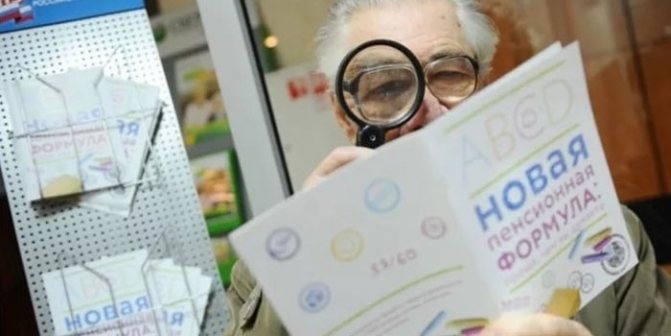
Increase in pensions for civil servants
For government employees who have retired due to length of service, pension indexation in 2020 will occur on April 1. It will be increased by 2.4%. In order for the increase to be equal to 1,000 rubles, it is necessary to have current payments of at least 41,666.66 rubles, therefore, for most civil servants on well-deserved retirement, the increase will be less.
The size of the social pension in 2020
The period and amount of indexation of pensions of this type coincides with the increase in payments to civil servants and is carried out in a similar amount (that is, on April 1 by 2.4%). These payments are provided to persons who are not entitled to other types of security. Social pensions are:
- Due to disability. Prescribed to persons with diagnosed disabilities who do not have insurance coverage.
- For the loss of a breadwinner. Paid to minor children (and other disabled relatives) of the deceased person, in the absence of his insurance experience.
- Due to old age. This requires reaching retirement age. The first stage of its increase will begin in 2020, so the increase on January 1, 2019 will be given to persons whose retirement was in the same order: 55 years for women and 60 for men.
The last category includes citizens who have reached the established age, but have not accumulated the required work experience and have not accumulated the required number of pension points.
- How to get property tax benefits for pre-retirees
- 10 cars with high mileage that you can buy
- Why washing doesn't protect you from coronavirus
The pension for such persons before the April increase 2020 will be 5,180.24 rubles, after - 5,304.57 rubles.
Regardless of the type of pension payments, the recipient is given a special bonus. It is prescribed if the amount of security is less than the pensioner’s subsistence level (PLS). This value can be considered analogous to the minimum pension; it is set at the regional level and varies depending on the recipient’s place of residence:
- In 2020, the cost of living for a Muscovite pensioner is 11,816 rubles, in 2020 it will be increased by 2.53% and will be 12,115 rubles.
- In the Moscow region there will be a 4% increase in these payments from 9,524 rubles. up to 9,908 rub.
- In St. Petersburg and the Leningrad region - from 8,726 rubles. up to 8,846 rub. (growth by 1.4%).
To calculate the total amount of security for a particular person, the following income options are taken into account:
- All types of pension payments assigned to a given person.
- The financial equivalent of a set of social services.
- Monthly cash payment.
- Other additional financial support.
- Any options for social assistance.
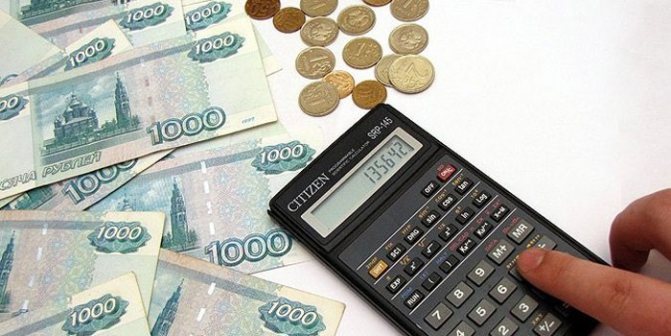
If the sum of all these indicators is less than the regional value of PMP, then the pensioner has the right to a social increase. For example, if after indexation in 2020 the amount of payments from a Moscow pensioner is 10,000 rubles, then he is entitled to an additional payment to his pension up to the size of the PMP - 2,115 rubles.
Why increase the retirement age for this?
It was emphasized that pension reform had become inevitable as the number of pensioners increased and the number of working-age citizens decreased. If the age limit is not raised, the Pension Fund will soon have nowhere to take funds from. With the gradual implementation of the reform, it will be possible to increase pensions for citizens in just a few months, in particular, it will make it possible to pay that very notorious thousand rubles.
Expert opinions on this matter are mixed. The majority believes that the Government has chosen the easiest path, while worsening the lives of pensioners, and lobbying primarily for the interests of certain social strata. It would be more logical to find mechanisms that would interest employers to pay “white” wages and taxes, as well as transfer part of the income to citizens working without registration for themselves.
A former PFR lawyer proved the lack of qualifications and deceit of Putin’s speech on pension reform
At the same time, legislators cite as an argument the average age of life expectancy in Russia according to data for 2017 – 72 years. They just don’t explain in detail why there is such a figure, which is, to put it mildly, puzzling.
Anyone can go to their local cemetery and see what time people, especially men, die on average. The declared 72 years are calculated as follows: the total number of deaths for 2020 is taken and their average age is calculated. But we must take into account that child and youth mortality rates have decreased in recent years. Due to this, the final formal figure of life expectancy increases, but the elderly do not live longer.
The result is extremely disappointing - the majority will not live to see the new retirement age or will not live long after reaching it. That is, many will not see even this tiny increase.
What is “pre-retirement age” and how old is it? Read our new material →
conclusions
Doesn't inspire optimism:
- The government, based on its own considerations, did not explain in accessible language exactly how the announced surcharge would be calculated. Therefore, many people will be disappointed in January 2020, not seeing the promised thousand. A new surge of dissatisfaction with the reform is possible.
- The supplement (monthly) will be available only to non-working pensioners.
- Its size varies and will depend on the actual pension received. If it is below 14,414 rubles, then the compensation will not be a thousand, but less.
We can draw a general conclusion that this payment will not improve, despite all the Government’s assurances, the situation of the bulk of pensioners. It is beneficial only to those who already received a lot, and this is mainly the state apparatus.
Categories of pensioners who will receive an increase in pension in 2020
The Government associates the announced increase of 1,000 rubles. per month with a planned increase in the retirement age for recipients of insurance pensions.
Therefore, not all those who are already retired will receive increased payments, but only those citizens for whom the following conditions are met
- Citizens are active pensioners who do not work (i.e. non-working pensioners).
- They receive insurance pensions (for old age, disability or loss of a breadwinner).
The Government does not plan to implement an increase for working pensioners from 2020. Indexation has not been carried out for them since 2016, and the authorities will not change this approach in the future. For recipients of social pensions, the increase in payments from April 1 is not due to the announced pension reform, but to an adjustment to the pensioner’s subsistence level.
It is in this amount (1 thousand rubles) that the additional payment will be assigned only to those persons who receive the average pension in Russia for 2020 - 14 thousand 414 rubles. In fact, the amount of the increase will be different: if the amount of a citizen’s pension provision is less than 14 thousand 414 rubles, then, accordingly, the additional payment for him will be less than 1 thousand rubles (and vice versa). But in relative terms, the size of the increase for all pensioners will be the same - an increase of 7.05%.
